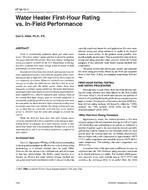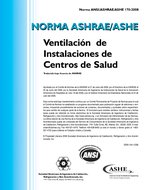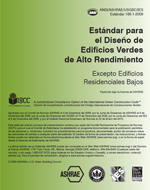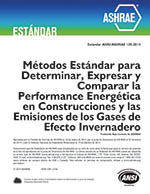Description
There is considerable confusion about just what water heater “first-hour rating” means and how it should be applied. Describes the various “first-hour rating” testing and rating procedures set forth by the US Department of Energy and then examines how those ratings relate to actual in-field performance of water heaters. Extensive field test data from 16 fully instrumented electric water heater field test sites reveal that the majority of hot-water runouts are due to high-flow-rate, high-volume draws imposed over relatively short times. Moreover, relatively few secondary runouts occur after the initial runout, and those that do occur usually are soon after the initial runout. Under these most frequently occurring runout conditions, the major determinant of adequacy of a water heater to serve the load is maximum first-draw capability (i.e., directly related to tank volume). None of the various first-hour ratings, past or currently proposed, is consistently useful for predicting the correct tank size to be used because under the short-duration, high-volume draws that most frequently cause hot water runouts, the energy withdrawal rates are so high that no commonly used tank-type water heaters (fossil or electric) heat the water fast enough to prevent the runout. While the field test data show that tank volume (more correctly, maximum first draw capability) is the strongest determining factor of adequacy of a water-heating system, it also shows that reheat rate is not unimportant. Reheat rate is still an important factor, but is of secondary importance compared to tank volume.
KEYWORDS: year 1996, water heaters, rating, testing, comparing, hot water supply, sizing, water tanks, water heating, USA
Citation: Symposium Papers, Atlanta, GA, 1996
Product Details
- Published:
- 1996
- File Size:
- 1 file , 490 KB
- Product Code(s):
- D-17194




